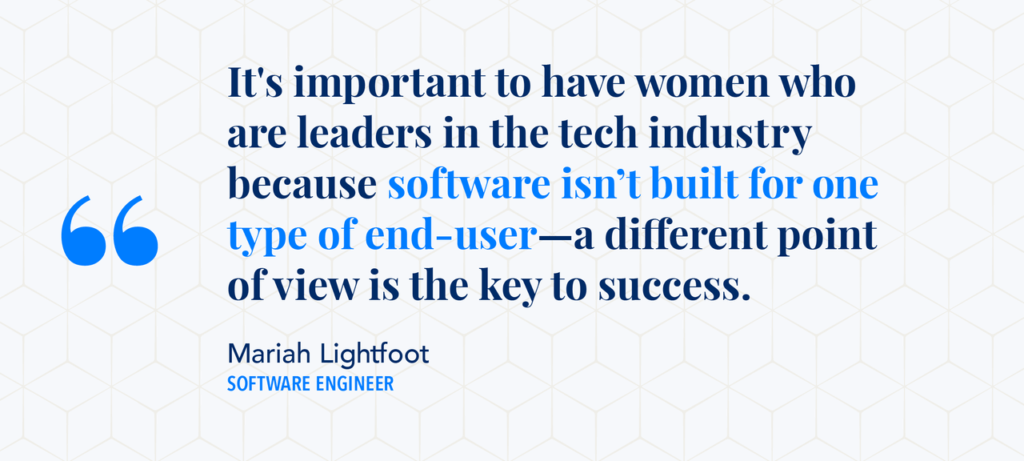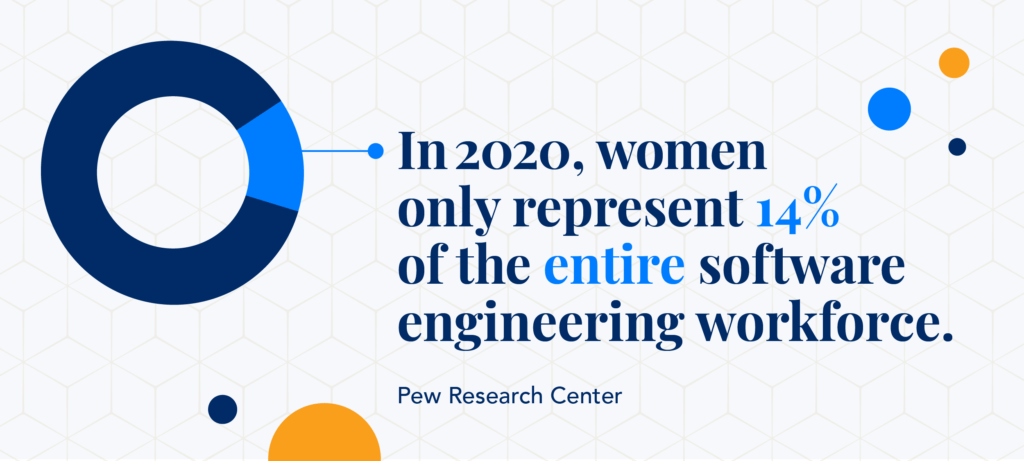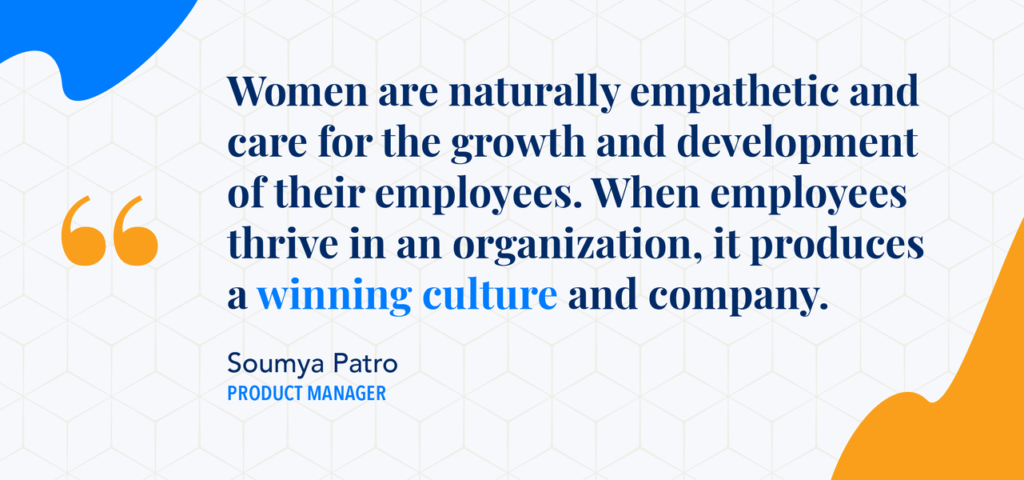Meet Tal Barak-Manela. She has 15 years of experience in Software Engineering and graduated from The Academic College of Tel-Aviv, Yaffo, with a BA in Computer Science and Economics, and earned her MS in Computer Science from the University of Chicago. She has been working at Capacity since June 2019 and was recently promoted from Front-End Team Lead to Director of Engineering at Capacity!
Her primary goal in her new role is, “to make sure the different dev teams work in sync so that we can build a high-quality and scalable product together.” In addition to giving Tal her much deserved recognition for her promotion and accomplishments, we’ll touch on exactly how important it is to encourage more women to enter this field.
“It’s important to have women who are leaders in the tech industry because software isn’t built for one type of end-user,” shared one of Capacity’s Software Engineers, Mariah Lightfoot. “A different point of view is the key to success.”

Let’s increase the Tals of the world.
If you do a Google search on women in tech, you’ll most likely find a handful of articles that were published in the past 5 –10 years that mention how the number of women in tech is growing, but not as fast as it should. For example, In 2020, women only represent 14% of the entire software engineering workforce. Thirty years ago in 1990, that percentage was 12%.

As demonstrated by the very slight percentage increase over the past 30 years, companies aren’t rushing to address the gender biases that are still occurring. Women still face challenges when it comes to pay, dialogue, and promotions. While this is an unfortunate theme across industries, tech is one where women are few and far between.
One way everyone can pitch in includes advocating for women at your company. Give more women a seat at the table, interject if a woman is being talked over in a meeting, and show your appreciation and admiration when credit is due! We all can encourage a positive environment if we stay cognizant.
For women who are just entering the field, Tal recommends that it’s important to, “Pick your employer wisely. Make sure the team and company you are joining truly treats women as equals. Make sure they offer equal pay, advancement opportunities, etc.”
One article suggests that there are 4 fundamental areas that women should look for in an organization, which are not too far off from Tal’s recommendation. These fundamentals include representation, pay, health, and job satisfaction of the current women who work at the company. To add on to that list, I’d say having a support system is equally as important.
Cheers to women supporting women!
When we asked members of her team, they had nothing but positive and appreciative words about Tal’s contribution to the company and her team.
“Tal brings a calm and decisive presence to any meeting,” shared Capacity’s UX/UI Designer, Audrey Western. “She is able to facilitate decision making while listening and respecting every idea.”
Capacity’s Product Manager, Soumya Patro, believes having women leaders is not only great for promoting gender equality but is also necessary for organizations to succeed in today’s workplace. When asked why, Soumya mentioned that, “women are naturally empathetic and care for the growth and development of their employees. When employees thrive in an organization, it produces a winning culture and company.”

Soumya went on to say, “Tal is very efficient at project planning and execution. All the features launched at Capacity go out on time because of her detailed planning. She not only understands the engineering side but also cares a lot about the user experience. She has made my job easier from the day she joined.”
How to promote a better tomorrow.
Encouraging more girls to get (and stay) interested in tech is another way we all can increase the number of women entering the field. In a recent study from Microsoft, it was found that girls lose interest in tech due to, “peer pressure, a lack of role models and support from parents as well as teachers, to a general misperception of what STEM careers look like in the real world.”
When asked, What’s something about software engineering that the typical person wouldn’t know? Tal answered, “It is a lot like solving puzzles. Many times you are faced with problems you never solved before and you have to find a solution.”
Introducing STEM to young girls as a fun puzzle could be a defining factor for those who are still thinking about what they want to be when they grow up. By positioning STEM as a fun hobby, all of the discouraging factors could be less intimidating. Take for instance Capacity’s sister organization, Create a Loop, that’s dedicated to bringing rigorous and ambitious computer science instruction to young students in the Saint Louis Metropolitan area.
In 2017, Create a Loop started hosting beginner and advanced clubs for a group of diverse students. The breakdown was and still is approximately 50% female, 50% scholarship, and 50% of students from populations that are underrepresented in computer science. “The makeup of the classes is intentional,” said Create a Loop’s Executive Director, Sherea Dunlap. “We want everyone in our program to get accustomed to a 50/50 split during our classes.” From gender to race, Create a Loop creates an environment where every student has experience working alongside one another.
By making STEM easily accessible, more children (girls specifically) will have the opportunity to turn it into a future career or hobby. While Tal’s interest in software engineering came from the fact that it, “has a perfect combination of logic and creativity and there are always new things to learn,” who knows what will interest the future women in tech unless we put our best foot forward.
We should all approach the topic of women in tech like Tal approaches engineering and take every opportunity to solve the problem with creativity and logic.
“Having women in leadership roles is a simple matter of representation and passing the buck eventually leading to gender equality,” suggested Soumya. “The more women leaders we have in tech, the more women employees will be inspired by them and look up to them. More women will find a voice in the organization and navigate their career struggles successfully. Women will look at leadership roles as attainable and through mentorship will eventually be able to get there.”








































